BEGINNINGS OF A MOVEMENT
A journey into our past to find fresh inspiration for today
By Micah Brickner
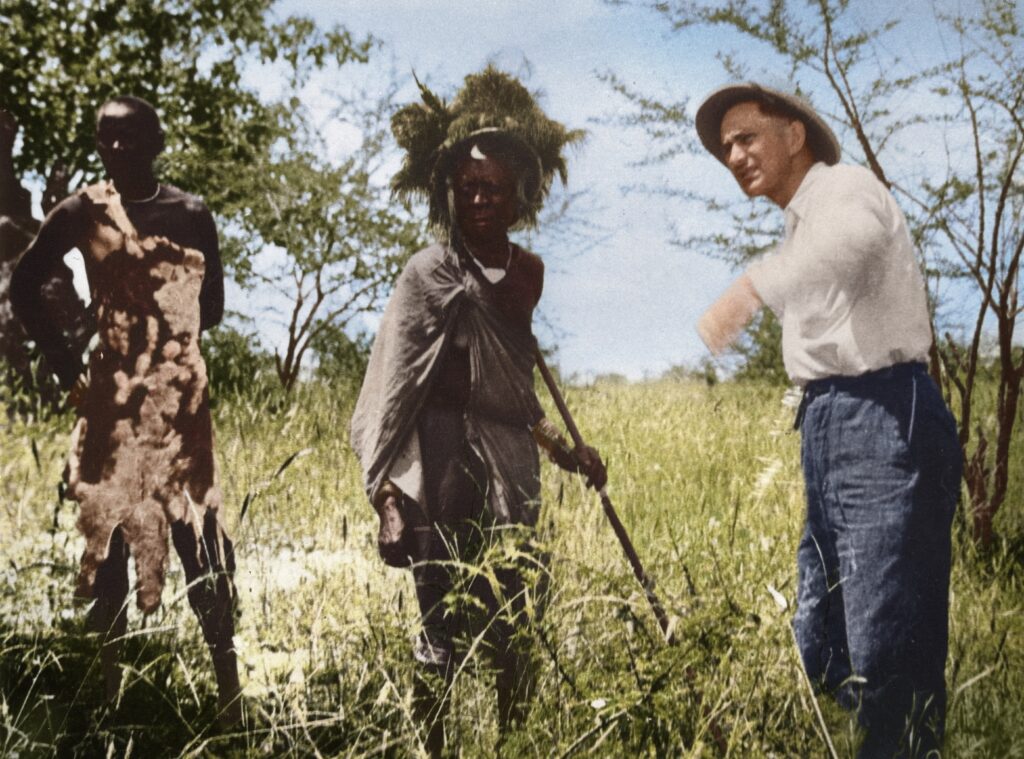
Chief Nyatega (center) of the Zanaki tribe, and an unidentified companion greet Elam Stauffer (right) when EMM missionaries arrived at Katuru Hill in Shirati, Tanzania. This 1934 photo’s original caption indicates that this photo was taken when the missionaries were choosing building sites for the mission. EMM ARCHIVES
Many of the readers of Missionary Messenger are likely familiar with the following narratives. However, as we look to the future, we thought it was important for us to reflect on the past and acknowledge how God’s faithfulness leads us into the work ahead. We especially thought it was helpful for newer readers of the magazine to get a quick glimpse at the origins of our global mission work. Thousands of EMM workers have experienced the hardships and the joys of sharing the good news of Jesus with the world. Among our earliest international work, no doubt, workers faced great challenges. However, despite, and even sometimes because of those struggles, came movements of people coming to know Jesus. EMM’s global work began with this movemental vision, and we are praying that God might continue to use us much in that same way.
TANZANIA
Shortly after Elam Stauffer arrived in Tanganyika (now Tanzania) in 1934, he met up with an African Inland missionary named Emil Sywulka. Elam was one of the four first global missionaries sent by EMM (then called the Eastern Mennonite Board of Missions and Charities). Elam and Emil were being given a tour around the Musoma District by the chief of the local tribe. Standing on Katuru Hill, Chief Nyatega pointed out toward the field and said, “Here is where I think you ought to build….That’s your field.” Elam was confused by this statement. He responded, “To whom shall I preach? The trees? The people are down there.” He was right: the people were down there. But what Elam didn’t realize at the time was that even though the people were down there, the people also went up to Katuru Hill. That day, Elam had to learn that sometimes mission work doesn’t make sense. God spoke to Elam through Chief Nyatega, because soon after that, the Eastern Mennonite missionaries begin holding meetings under a tree on that hill. People came. They heard the gospel and a movement had begun. While this isn’t the complete beginning of EMM’s story, it is in fact the beginning of international, cross-cultural work. I am certain that Elam learned something critically important from that interaction: trust where God is leading. Elam may have chosen to go with what made sense, but instead, he chose to listen to God speaking through Chief Nyatega. Ten years later, the church experienced slow — sometimes painful — growth to 200 people. A decade after that, in 1954, the church had grown to more than 1,000. God continued to grow His church in Tanzania for decades. Today, La Kanisa Mennonite Tanzania (Tanzania Mennonite Church) has about 70,000 members and has a God-sized vision of sharing the good news will 1 million people by the year 2034.
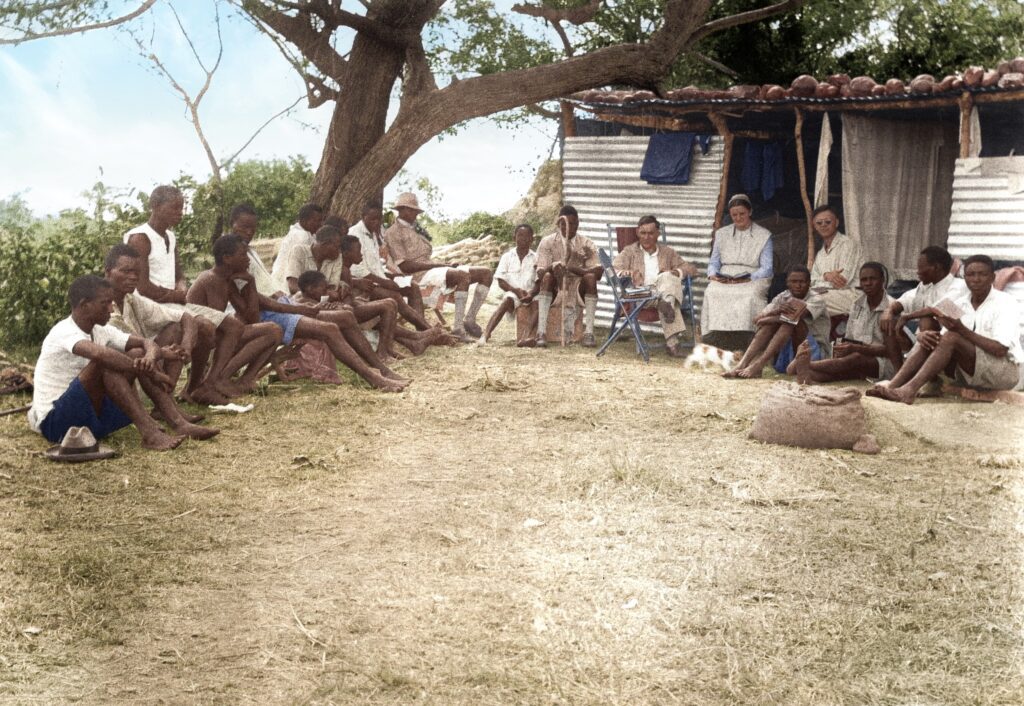

In July 1934, people gather for one of the first Sunday morning services on Katuru Hill in Shirati, Tanganyika. Elam and Elizabeth Stauffer and John Mosemann can be seen sitting immediately in front of the first temporary corrugated house.
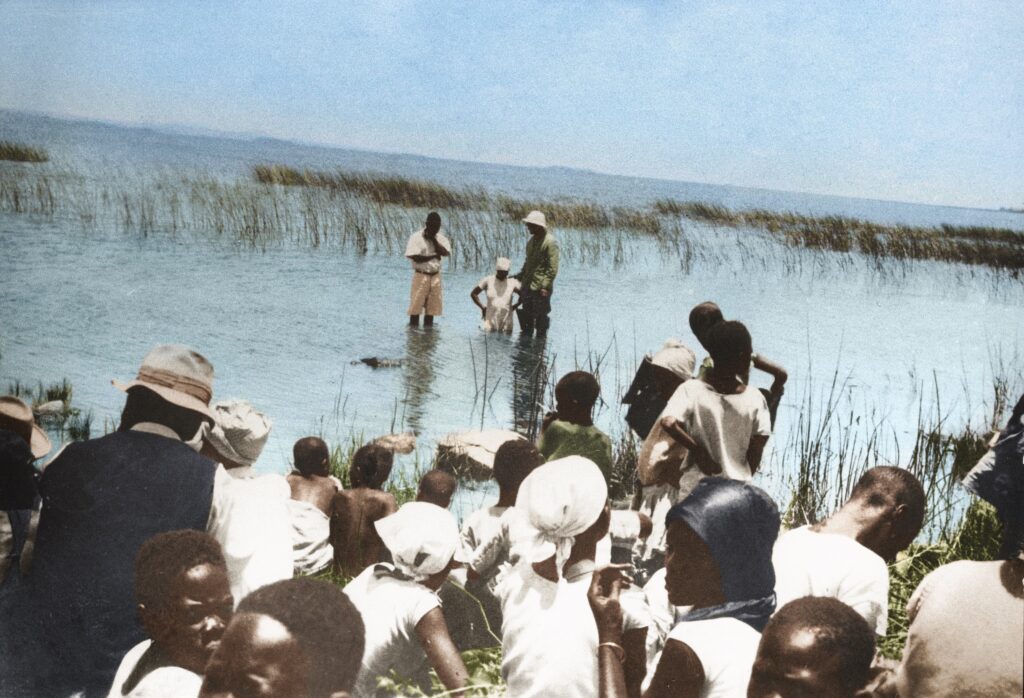

Fifteen people were baptized on September 15, 1935. While Elam Stauffer (right, background) baptized Julia (center, background), a poisonous snake passed between them. Zedekiah Kisare (left, background) interpreted for Stauffer, and was among 6 persons received into the church by transfer.
ETHIOPIA
The mission work in Tanganyika began to reach into Kenya as early as 1943, although it wasn’t until 1964 that an official mission station would be founded in Kenya. EMM was looking at a third country in order to send its second international team: Ethiopia. In fact, in 1933, Ethiopia was one of the countries where EMM leaders were considering starting international work. As the post-war world was working to reorganize itself, Mennonites found opportunities to share the peace of Jesus through relief work. Many people think of the Second World War as being fought in European and Pacific theaters but forget about the toll that the war took on the African continent. One of these places was Ethiopia, which had been occupied by Italian forces from 1935 to 1941. Mennonites began working in Ethiopia in 1945, and by the end of 1947, EMM had sent its first missionaries there also, Daniel and Blanche Sensenig. The earliest work in Ethiopia focused on health care, education, and evangelism. However, there were real concerns about what evangelism could look like in a country that had governmental prohibitions on proselytizing. Surprisingly, the early EMM workers had a surprise visit from Emperor Haile Selassie I at their hospital in Nazareth. As a result of this visit, they were able to arrange an official audience with the emperor to discuss their intentions of doing evangelistic work in the country. The emperor received them positively and even encouraged the workers where they could start with this work. So began evangelistic work in Deder. In the years that followed, the church continued to grow, but it wasn’t until the Meserete Kristos Church (the Amharic name for the Mennonite church in Ethiopia) faced intense persecution that it really began to experience multiplication. The Communist Derg government came to power and eventually drove the church to meet in secret. In 1982, the church had about 5,000, and by the time the church no longer needed to be underground in the early 1990s, the church had grown to 50,000 people. Today, estimates have the total faith community of the Meserete Kristos Church at more than 600,000 people.
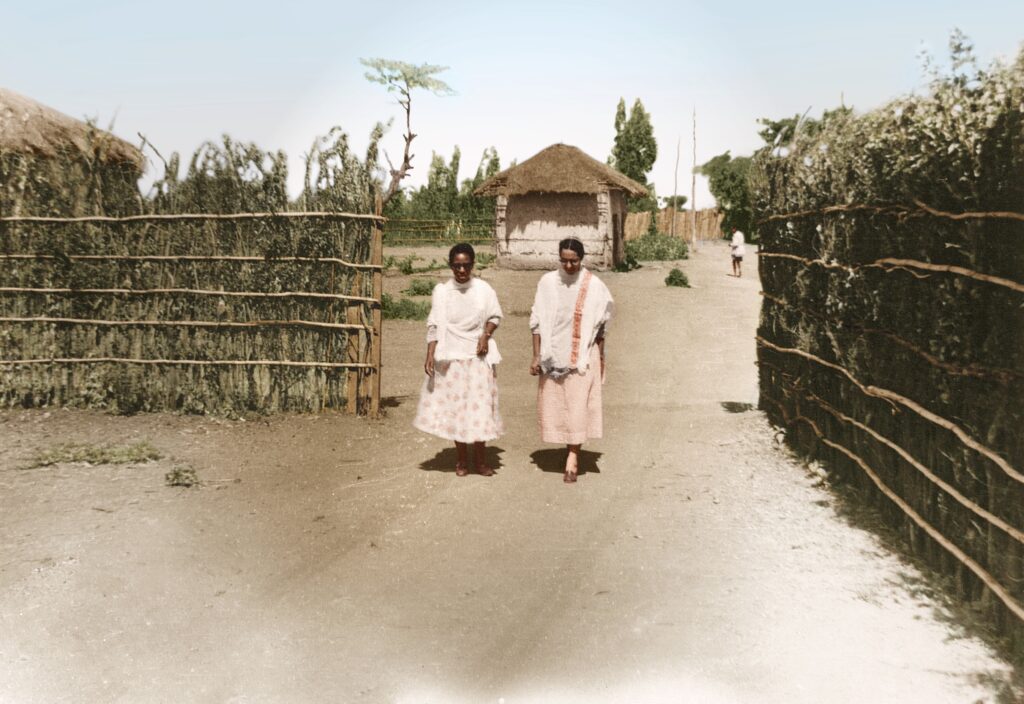

Ann Gingrich (right) is walking with an unidentified Ethiopian teacher in Nazareth at some point in the 1950s.
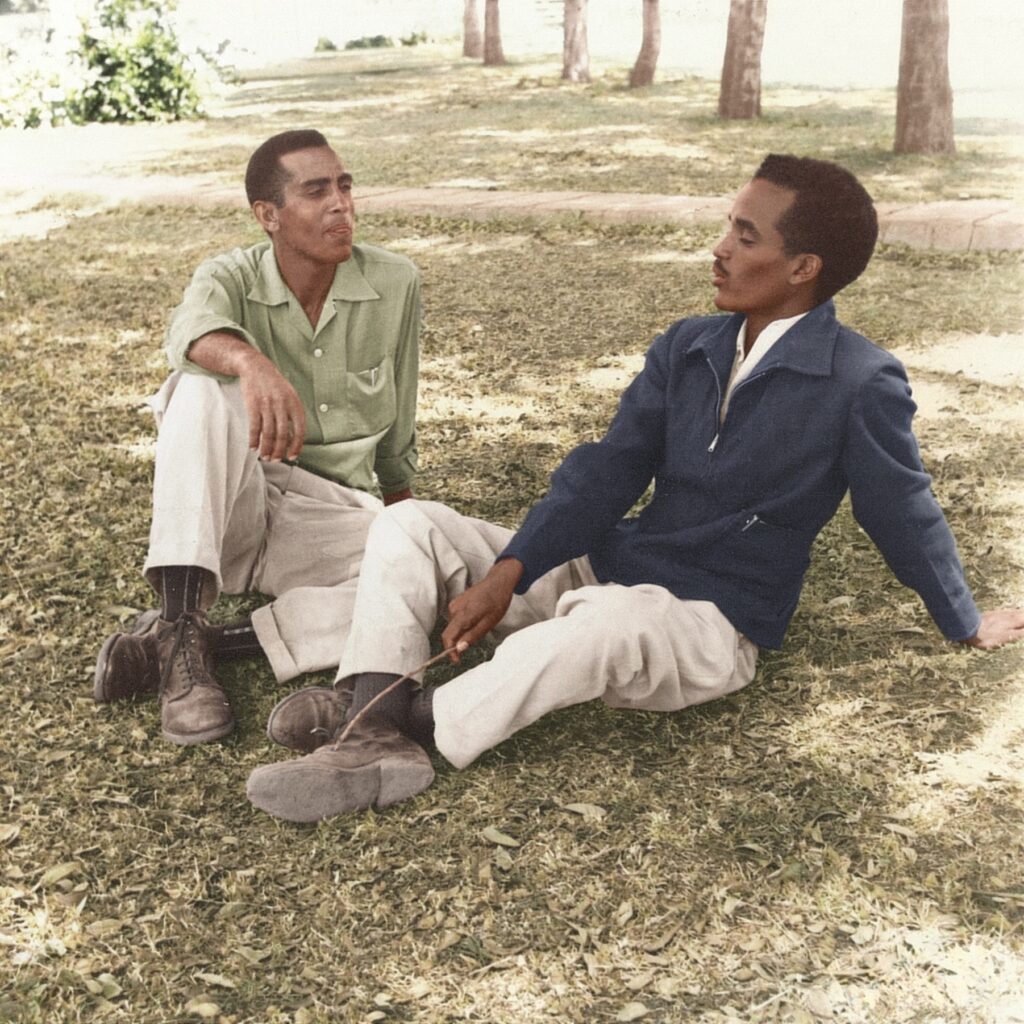

About 1958, two speakers at a conference in Bedeno, Ethiopia, chat together: Daniel Lemma (left) and Shamsudin Abdo.
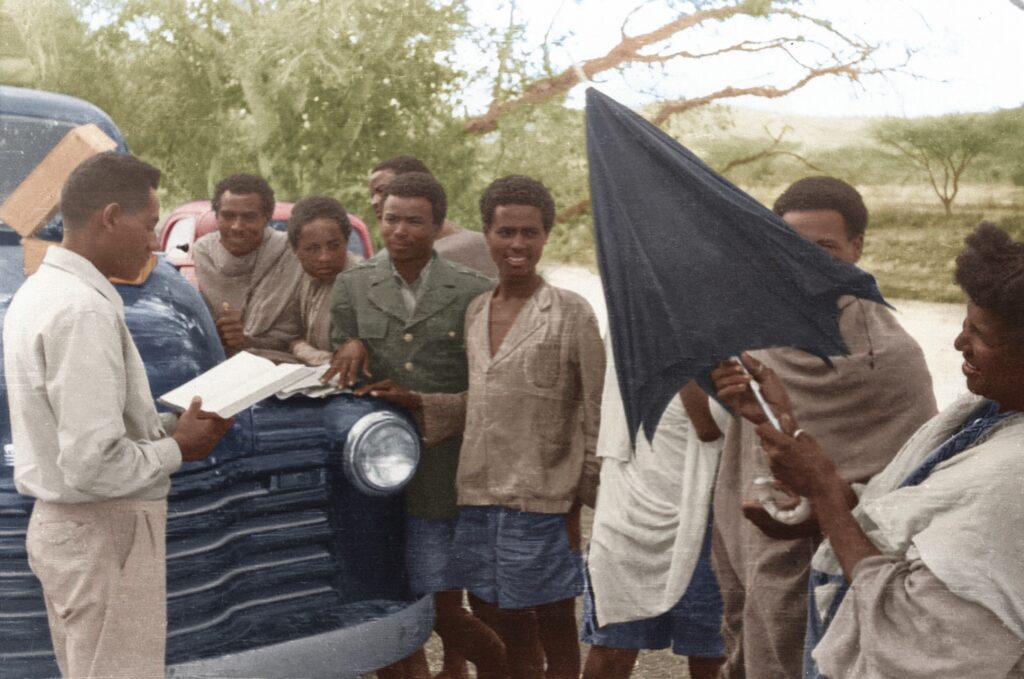

In the 1950s, a group of Oromo people in Ethiopia gather to listen to a gospel record, which is being played from a record player sitting on the hood of a vehicle.
HONDURAS
The origin story of EMM’s work in Honduras began with one congregation that had a passion for mission: East Chestnut Street Mennonite Church. One of the church’s pastors, Jacob E. Brubaker, was a pattern maker who frequently traveled to New York City. During one of his trips, he was intrigued watching the banana boats come in to dock and asked someone for more information about where the boats were coming from. Upon learning that someone could pay a small fee to also ride on the boat back to its home country of Guatemala, Brubaker was very intrigued by the idea of Central America. After an exploratory trip to several Central American countries, it was decided that northern Honduras would be an ideal location for EMM to get started. So, the work in Honduras began in the village of Trujillo when George and Grace Miller moved there in 1950. Their first ministry was among the English-speaking and Spanish-speaking people in Trujillo and the Garifuna people in Cristales. Ministry in Honduras involved both evangelistic and healthcare work at first, with much more as the work advanced. The faithful ministry in Honduras multiplied slowly with about 30 members in 1957. The national church leadership took the lead in 1969, and then by 1987, the church had more than 2,600 members. In 2003, the church’s membership reached more than 9,000. During this same period of time, EMM missionaries Ed and Gloria King began leading a ministry in Tegucigalpa in 1974. This ministry, focused on the urban capital city of the country, was called Amor Viviente, and through its ministry would end up discipling thousands of young people. By 1987, this ministry had reached more than 2,800 people. Then in 2003, the church had grown to more than 10,000. As of 2020, the church’s membership is more than 12,500 people.
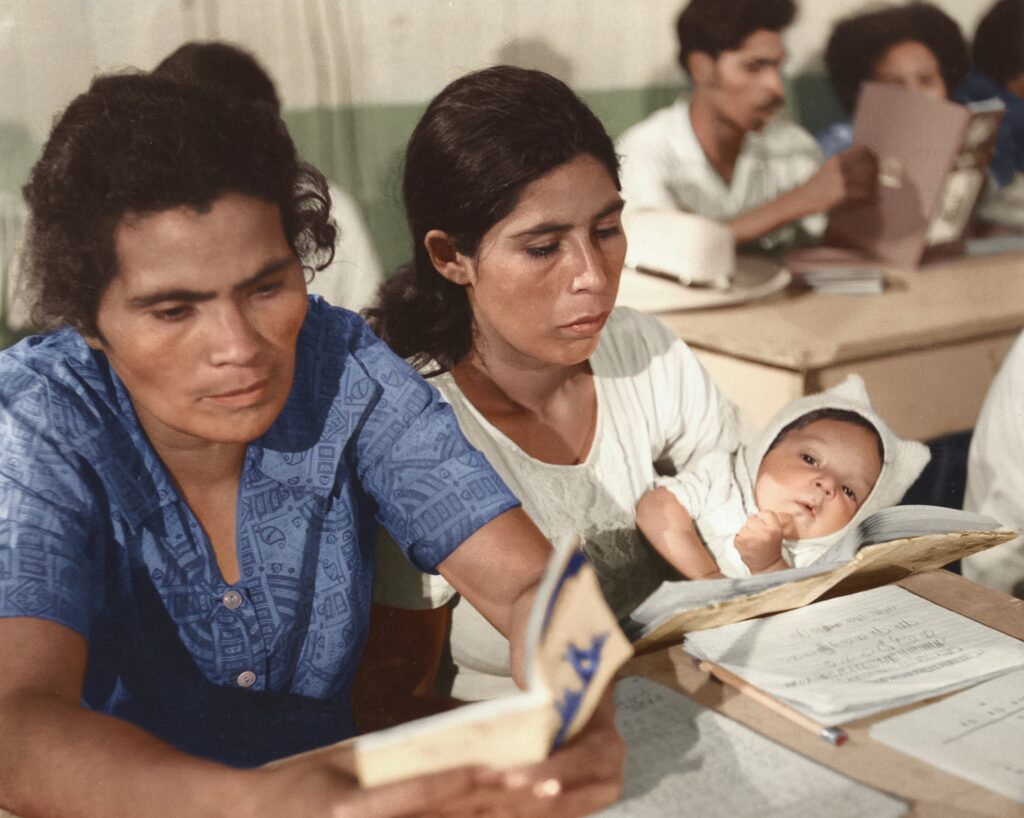

In 1971, students participate in a class in Honduras.
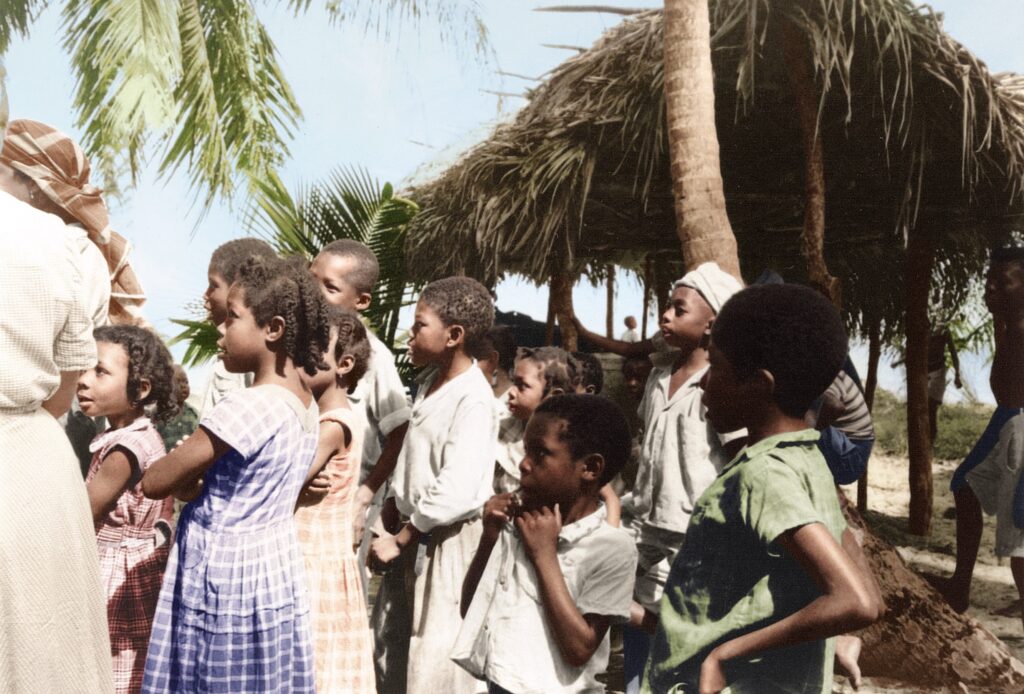

In 1957, a group of children gather in Honduras, interested by the missionaries.
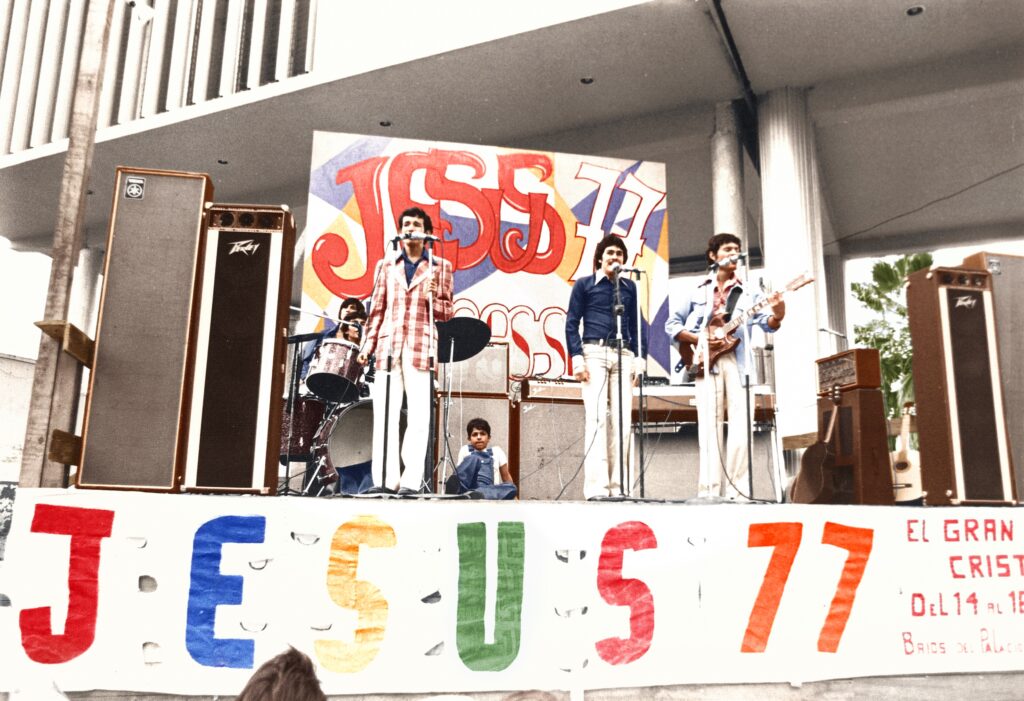

In 1977, a musical group leads music for an evangelistic event out of Amor Viviente in the heart of Tegucigalpa, Honduras.
LOOKING FORWARD
It’s through this persistent patience and faithful long-suffering that God multiplied each of these early EMM mission fields. Out of these ministries became multiplication movements that continue to grow and see lives being transformed by Jesus. We are convinced that this same missional impulse that we felt 88, 75, and 72 years ago, is the same force that can drive EMM into a new century of mission. This missional impulse, which comes from the Holy Spirit, will push us forward as we listen, and then take action. It’s quite likely that whatever those actions are, they won’t always make sense at first —much like planting a church in a grove of trees in Tanganyika, or developing a medical mission in post-war Ethiopia, or being drawn to a banana boat headed to Central America. Wherever God is leading, may we be faithful in following.


Micah Brickner serves as communications director for EMM.
SOURCES REFERENCED
- A Gentle Boldness by David W. Shenk
- GAMEO.org
- Surviving, Thriving, and Multiplying by James & Rhoda Sauder and George & Lois Zimmerman
- Unpublished internal histories by A. Grace Wenger
